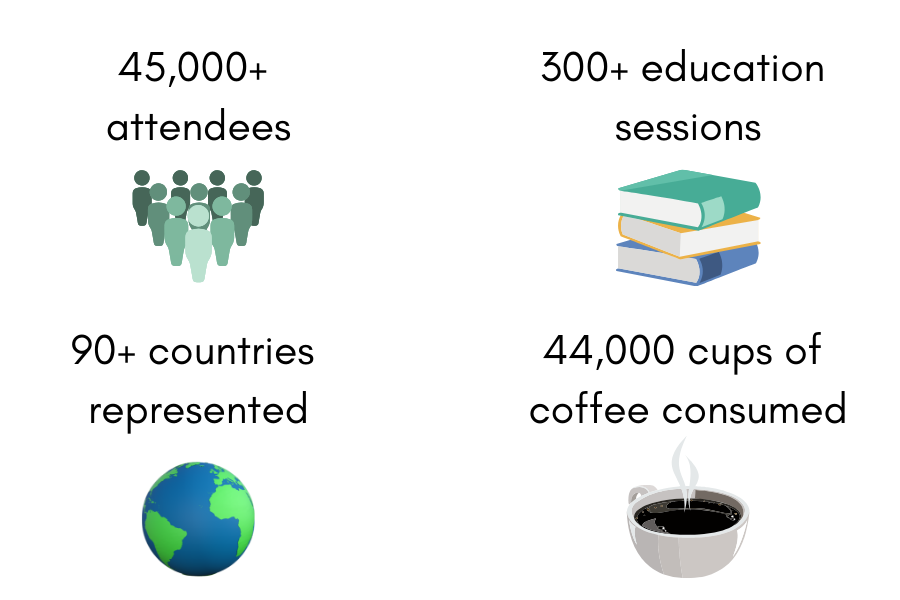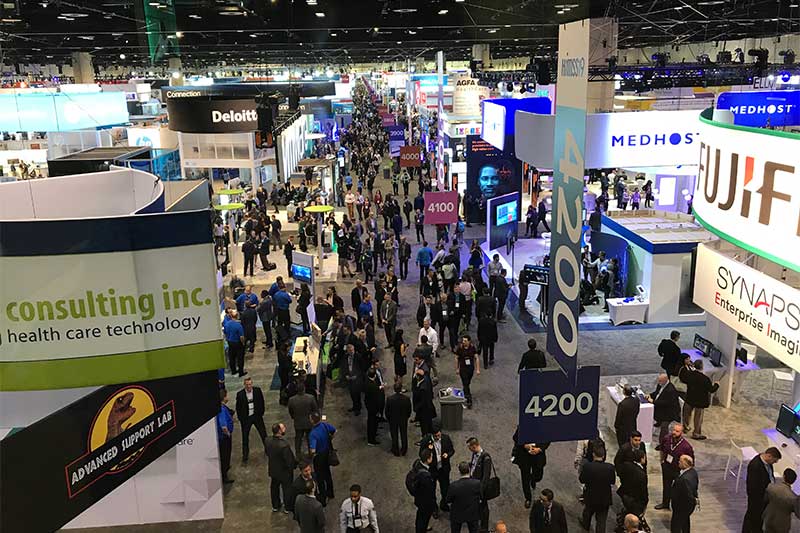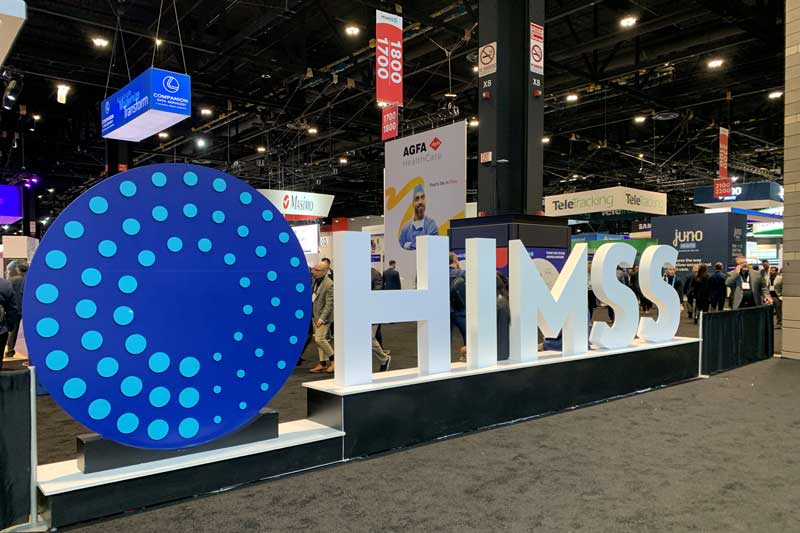We are now back in the office after a busy HIMSS19 in Orlando, Florida. More than 45,000 people attended the healthcare technology industry’s largest conference of the year to learn all about topics such as artificial intelligence, interoperability, patient engagement, and more.
What were some of the highlights and themes from the show? Here’s a quick look.
HIMSS19 by the numbers
HIMSS19 took place over five days at the Orange County Convention Center, which has exhibition space that is half a mile long! In addition to the more than 1,300 vendors exhibiting at the show, HIMSS featured more than 300 education sessions so attendees could learn the latest in healthcare technology.

Analytics and the opioid crisis
One of the more interesting education sessions I attended was titled, “A Quality and Analytics-Based Approach to the Opioid Epidemic.” In this presentation, Barbara Coughlin and Carol White of HCA Healthcare discussed how their organization is using analytics to standardize workflows around opioid prescribing and make physicians more aware of how they rank in comparison to their colleagues in prescribing habits.
Using analytics, HCA was able to reduce its opioid prescriptions from 7.7% of total prescriptions to 5.4%. It was also able to reduce those patients with daily MMEs (morphine milligram equivalents) of greater than 90 from 1.33% to 1.2% of patients.
Last year, I wrote on the blog about how analytics can help combat the opioid epidemic. It’s nice to see the real results healthcare organizations are seeing from these types of efforts.
Using AI to detect cancer
Another session I attended was on “Finding Cancers with AI and EHR Data.” This was a fascinating presentation on how Dr. Varda Shalev at the Institute for Research and Innovation at Maccabi Health Services in Israel used AI to determine the link between falling hemoglobin rates and a cancer diagnosis. This issue in particular is near and dear to my heart, as I previously wrote about in this article on needing to liberate cancer data from EHRs.
Dr. Shalev noticed that the hemoglobin rates of cancer patients actually started to fall three to four months before they were diagnosed. She could then develop an algorithm to detect these falling numbers and potentially make a cancer diagnosis earlier in patients when the cancer could be more curable. Although she could not do anything for her current cancer patients, she could use this information to more proactively detect cancer for future patients. This presentation talked about some of the innovation in healthcare, and how it needs to start from the bottom up, with providers such as Dr. Shalev, instead of from the top down.
Improving pediatric outcomes
A third presentation I attended discussed how Children’s National Hospital in Washington, D.C. created disease registries – which are actually a group of 10-20 measures for specific disease categories – in order to improve patient outcomes.
The diseases the hospital focused on were:
- Asthma
- Cardiomyopathy
- Diabetes
- Sickle cell anemia
- Epilepsy
- Inflammatory bowel disease (IBD)
With the disease registries, doctors could more easily access the associated measures in the workflow and understand which areas to focus on. With this project, Children’s National was able to improve outcomes by 10% in four of the above conditions. The hospital says that necessary ingredients for success were data integrity, clinician adoption, and patient engagement. Next, the organization would like to work on an autism registry.
Delivering real results
All of these presentations focused on the real results that healthcare organizations are seeing as a result of better understanding their data. That’s something we tried to focus on in the Dimensional Insight booth as well. Some of the data points we displayed to HIMSS attendees on the show floor focused on the ROI our customers are seeing as a result of using Diver Platform. These include:
- 46% improvement in performance of colorectal screenings
- $2.5 million positive revenue swing in value-based payments
- 58% reduction in antimicrobial treatment days
- 37% decrease in readmissions
- 78% reduction in acetaminophen drug costs
- 2 hour reduction in ED wait times
- 24% reduction in newborn readmissions
- Up to 41% improvement in NTSV (C-section) rate
In fact, “Delivering Real Results” is a theme you’ll be hearing a lot more from us on as the year goes on. It’s one thing to sell technology, but another to actually follow through on the technology promise and make an impact in patient outcomes and better care. Stay tuned for more on that in the months ahead.
Ready for a test drive of our healthcare analytics software?
- Solving Hospital CEOs’ Pressing Challenges With Analytics - April 15, 2024
- Navigating the Wellness Wave: Wine & Spirits Data Strategy - April 9, 2024
- Takeaways from HIMSS24 - March 26, 2024



